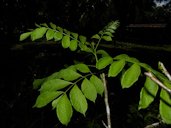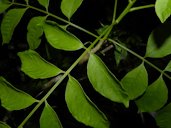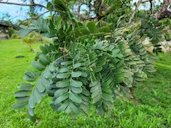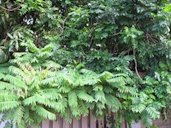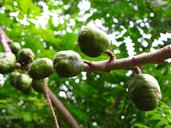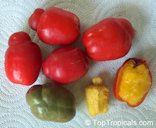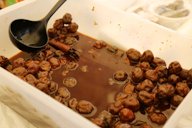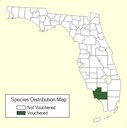| Mombin, Purple - Spondias purpurea | |||||||||||||||||||||||||||
|---|---|---|---|---|---|---|---|---|---|---|---|---|---|---|---|---|---|---|---|---|---|---|---|---|---|---|---|
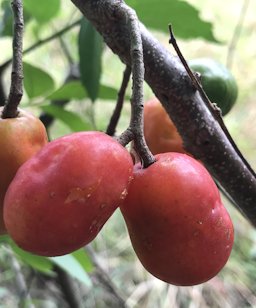 Fig. 1  S. purpurea, Puerto Jimenez, Puntarenas, Costa Rica 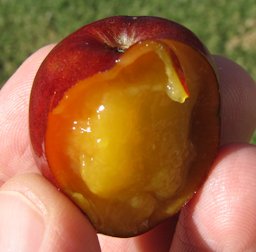 Fig. 2  S. purpurea (Jocote, Spanish plum) pulp and seed in hand Olinda, Maui, Hawai'i 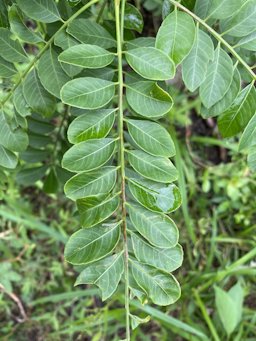 Fig. 3  Red Mombin, S. purpurea, Trinidad and Tobago  Fig. 4  Red Mombin, S. purpurea, Trinidad and Tobago  Fig. 10  S. purpurea 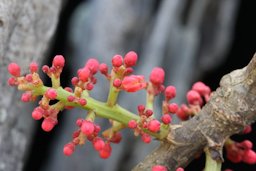 Fig. 11   Fig. 12  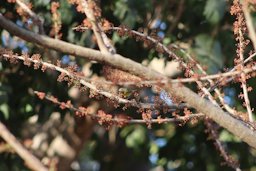 Fig. 13  Red mombin, S. purpurea, La Huerta, Jal., México 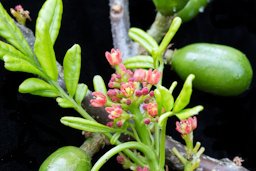 Fig. 14   Fig. 18  S. purpurea, unripe purple mombin 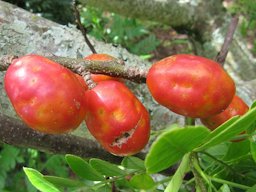 Fig. 19  Ripe fruits of jocote (S. purpurea), São Carlos, Brazil 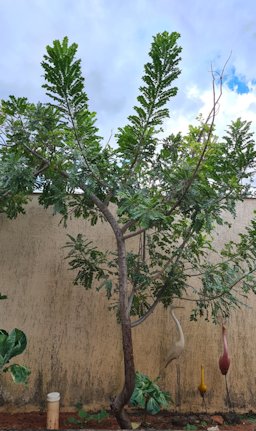 Fig. 24  S. purpurea, Guará, Brasília 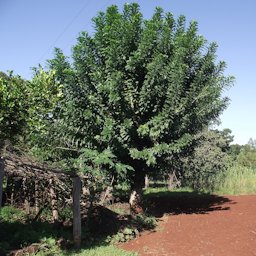 Fig. 25  Árvore de seriguela 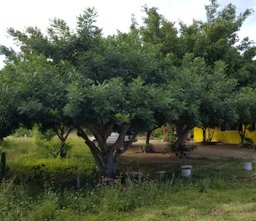 Fig. 26  Red Mombin, S. purpurea, Acatlán, Pue., México 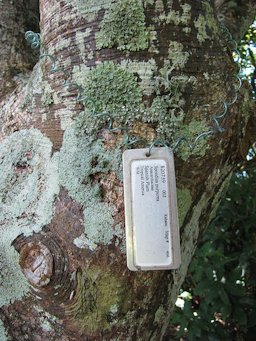 Fig. 27  S. purpurea (Jocote, Spanish plum) plant tag at Kahanu Gardens NTBG Kaeleku Hana, Maui, Hawai'i  Fig. 28  Jacote, Antigua, Guatemala  Fig. 29  Quinto Festival del Jocote, Barón Rojo 2016, San Lorenzo, Ahuachapán, El Salvador 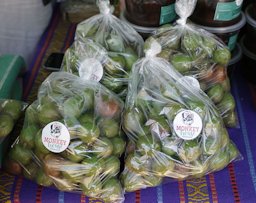 Fig. 30  Quinto Festival del Jocote, El Salvador | Scientific
name Spondias purpurea L. Common names English: red mombin, Spanish plum, hog plum, scarlet plum; Virgin Islands: purple plum; Trinidad: Jamaica plum; Barbados: Chile plum; Costa Rica and Panama: wild plum; Netherlands Antilles: red plum, noba,makka pruim; Spanish: ajuela ciruela; chiabal; cirguelo; ciruela; ciruela agria; ciruela calentana; ciruela campechana; ciruela colorada; ciruela de coyote; ciruela de hueso; ciruela del país; ciruela de Mexico; ciruela morada; ciruela roja; ciruela sanjuanera; hobo; hobo colorado; ismoyo; jobillo; jobito; jobo; jobo colorado; jobo francés; jocote; jocote agrio; jocote amarillo (yellow form); jocote común; jocote de corona; jocote de iguana; jocote iguanero; jocote tronador; jocotillo; pitarillo; sineguelas (Philippines); sismoyo; Portuguese: ambu, ambuzeiro, ameixa da Espanha, cajá vermelha (yellow form), ciriguela, ciroela, imbu, imbuzeiro, umbu, umbuzeiro; French: cirouelle, mombin rouge, prune du Chili, prune d'Espagne, prune jaune (yellow form), prune rouge 6 Synonyms Spondias crispula Beurl.; S. jocote-amarillo Kosterm.; S. mexicana S.Watson; S. negrosensis Kosterm.; S. oliviformis W.Bull; S. purpurea f. lutea Fawc. & Rendle; S. purpurea var. munita I.M.Johnst.; Warmingia pauciflora Engl. 13 Relatives S.tuberosa, S. pinnata, S. acida, S. novoguineensis, and S. borbonica, cashew (Anacardium occidentale), mango (Mangifera indica), and pistachio (Pistacia vera) 1 Family Anacardiacae (cashew family) Origin Southern Mexico through northern Peru and Brazil 6 USDA hardiness zones 10-12 Uses Fruit: fence rows; shade tree; ornamental 11 Height Reaching 10-20 ft. (3–6 m) in lowlands; 23-50 ft. (7–15 m) in highlands 6 Spread Open spreading canopy; 25-30 ft (7.5-9 m) 6 Plant habit Shrub or low-branched or spreading small tree in lowlands; spreading, thick-trunked tree in highlands 6 Growth rate Fast Trunk/bark/branches Branches thickish; brittle; twigs with lenticels; thick/transparent exudate exudes from cuts and bruises 6,8,10 Pruning requirement Maintain at 12-15 ft (3.7-4.6 m) 1 Leaves Deciduous; dark green; alternate; compound; 4.75-10 in. (12-25 cm); 5-19 nearly sessile leaflets; 0.5-1.5 in. (1-4 cm); bright-red or purple when young 6 Flowers Tiny; 4-5-petalled; male, female and bisexual; red or purple; borne in short, hairy panicles along the branches before the leaves appear 6 Fruit (climacteric) Yellow, red or purple; single or clusters of 2-3; globular to ovoid; drupe; tough skin; yellow pulp, fibrous; single large rough, fibrous seed; some selections have irregular shape 3 Season June-Oct. 1 Light requirement Full sun 1 Soil tolerances Grows over a wide variety of soils; well drained 1 pH preference Wide range Drought tolerance Mature trees are drought tolerant in Florida 3 Flood tolerance Moderately tolerant of occasional flooding 1 Salt tolerance Will not take high amounts of salt wind 7 Cold tolerance Protection from cold winds; 30 °F (-1 °C) Wind resistance Not resistant Plant spacing 25-30 ft (7.5-9 m) unless provisions are made to control tree size 3 Pest/disease resistance Fruit flies commonly infest the ripe fruits; in Florida, the foliage is subject to spot anthracnose caused by Sphaceloma spondiadis 6 Invasice Potential * None reported Known hazard In the Philippines, it is said that eating a large quantity of the fruits on an empty stomach may cause stomachache 6 Reading Material Spondias Growing in the Florida Home Landscape, University of Florida pdf The Red Mombin, Manual Of Tropical And Subtropical Fruits Purple Mombin, Fruits of Warm Climates Spanish plum, red mombin, Neglected Crops Spondias purpurea, Agroforestree Database Origin/Distribution The red mombin, Spondias purpurea L. (Anacardiaceae), is an aromatic fruit, highly valued for local people in the tropics since old times. The species is probably native to southern Mexico and Central America, where wild populations are still found. Early Spanish navigators took the red mombin to the Philippines. In Jalisco (Mexico) during the 19th century, red mombin was one of the most important fruit crops. Nowadays, fruit can be readily found in local markets. In Ecuador, it is commercialized and found in some supermarkets of the big cities. 9 It has been introduced into similar tropical regions in Southeast Asia and also in subtropical areas (Florida). 2 Description No other species of Spondias is so extensively used in tropical America as this. In many parts of Mexico and Central America it is a fruit of the first importance. It occurs in a wide range of seedling races or forms, and is capable of great improvement by selection and vegetative propagation. While scarcely so good as the imbu, the better varieties are pleasantly flavored and attractive in appearance. 5 In Florida, dwarf ambarella and purple mombin are grown commercially on a very small scale; dwarf ambarella and purple mombin are more common than yellow mombin. Spondias may be found as dooryard trees in warm locations along the southeastern and southwestern coastal areas and along the southern shore of Lake Okeechobee. 1 Leaves
Fig. 5,6,7. S. purpurea, Charcos, Puntarenas, Costa Rica Fig. 8. Red Mombin, S. purpurea, Guyane française Fig. 9. S. purpurea (Jocote, Spanish plum) Habit, Lahaina, Maui, Hawai'i Flowers The inflorescences are 0.4-4 in. (1-10 cm) long, few-flowered, usually produced at older and defoliate nodes. The petals are usually red to purple, 0.1-0.14 in. (2.5-3.5 mm) long at anthesis. 8 Perhaps the most distinctive character is that the flowers are born on short panicles in an axillary position along the old wood instead of being terminal as with all of the other species grown here. The flowers appear in March and April before the new leaves appear. 9 It flowers well in wet or dry climates but fruit from dry areas are of better quality. In very cool climates, it might grow but does not flower. 12 Host selections of red mombin have no fertile pollen and do not produce viable seeds. 3
Fig. 15. Red Mombin, S. purpurea, Guyane française Fig. 17. Red Mombin, S. purpurea, La Huerta, Jal., México Pollination Red mombin trees in the Philippines bear flowers with small stamens which produce no pollen. As parthenocarpy ensures good fruit set, there is no need for pollination in the cultivated crop. Apparently S. purpurea produces viable seeds in its area of origin. 14 Fruit Somewhat plumlike, the fruits, borne singly or in groups of 2 or 3, may be purple, dark- or bright-red, orange, yellow, or red-and-yellow. They vary from 1 to 2 in (2.5-5 cm) in length and may be oblong, oval, obovoid or pear-shaped, with small indentations and often a knob at the apex. The skin is glossy and firm; the flesh aromatic, yellow, fibrous, very juicy, with a rich, plum-like, subacid to acid flavor, sometimes a trifle turpentiney; and it adheres to the rough, fibrous, hard, oblong, knobby, thick, pale stone, which is 1/2 to 3/4 in (1.25-2 cm) long and contains up to 5 small seeds. 6 The mesocarp is yellow in color and juicy. The fruit is eaten by popping the whole thing in the mouth and sucking on the stone. 9 There is great variation in fruit size, color and quality between selections of red mombin and it is the most widely-cultivated of the Spondias species in this region. 3
Fig. 20. Ciruelas de huesito (S. purpurea L.) Cagua, Estado Aragua, Venezuela Fig. 21. S. purpurea, Puerto Jimenez, Puntarenas, Costa Rica Varieties At least 6 different cultivars are grown in Florida but there are no standardized names for them. The most common one might be called the scarlet plum as it is plum shaped, red in color and widely cultivated. It has a very rough irregular stone. This cultivar ripens in June and July. Another cultivar with yellow fruit and a smooth stone ripens from August to October. There is a yellow cultivar that ripens in late May leading off the season. One cultivar which ripens in June has nearly round, red colored fruits like cherries. A large red fruited cultivar known as 'Campechana' to Cubans is also grown. 9 Numerous clonal varieties of S. purpurea are known, but there has been no formal characterization of them. The cultivated varieties may be divided into two groups: Summer mombin. This fruits (in Central America) during the dry season from February to May, has ellipsoidal fruit that is 2.5 to 3 cm long with smooth, purple-red skin and yellow, smooth, sweet and slightly acid flesh. When green, these varieties look like olives. Winter mombin. This is of superior quality, with fruit that is 3.5 to 4.5 cm long, red or yellow, smooth or with protuberances, and has firm, sweet, slightly acid flesh. It ripens at the end of the rainy season (September to December). 2 It has been suggested that these two groups should be considered as different species, but their distinctive characteristics are within the normal varietal range in the cultivated species. 2 Harvesting Spondias should be carefully picked by hand because their peel is thin and easily broken. Fruit quality is best when fruit is allowed to ripen or nearly ripen on the tree. Ripe fruit may be eaten immediately or refrigerated for several days. Non-ripe fruit should not be refrigerated until ripe. 1 This climacteric fruit has a short postharvest shelf life of 5-6 days at ambient temperature. Fruit can be stored for 14 days at 54.5 °F (12.5 °C) and when transferred to ambient temperature of 86-89 °F (30-32 °C) it still has a shelf life of 4 days. 12 Propagation Trees introduced into Florida are all female trees, and seeds from fruit trees in Florida are not viable and will not grow. This limits propagation strictly to vegetative means, either air-layering or hardwood cuttings. 7 The red mombin is found in increasing numbers throughout South Florida because of the increasing Latin population which is quite familiar with it and has great appreciation for its quality. 7 After the harvest, when the leaves have been shed and flowering has just started, cuttings 3-6.5 ft (1-2.5 m) long are obtained from the best clones. The cuttings are left in the shade for about a week and then planted 10-23 ft (3-7 m) apart, at a depth of 12-16 in. (30-40 cm). 8 Seedling plants can start producing fruit when about 4-5 years old, whilst cuttings can commence when 2-3 years old. 15 Pruning Pruning can be done every year, since the flowers bud on the current year's branches. The experience of producers in Mexico is that pruning increases the size and weight of the fruit. 2 In Oaxaca, there are commercial plantations on which the trees are pruned at a height of 2 m; the cuttings are planted in double, inclined rows, with 3 m between the pairs of rows; when pruned, they look like European apple orchards. 2 Care must be taken not to make too large a wound because the soft and brittle nature of these trees can lead to rot in the open wounds. 1 Branches cut back past the previous season's growth will not bear fruit for at least a year. 3 Fertilization Spondias trees should be periodically fertilized in order to promote growth and regular fruiting. There are no field-trial-based fertilizer recommendations available for spondias. Observation of trees in Florida indicates that they will grow and fruit well with very little input; however, small amounts of fertilizer may enhance fruit yields and size. 1 Irrigation Watering during flowering and fruit development may improve fruit set and size. Newly planted and young trees may need to be watered during severe drought conditions. 1 Pests Caribbean fruit fly (Anastrepha suspensa [Loew]) lays its eggs in the fruit and is the major fruit pest of spondias in Florida. 1 Diseases In Florida, spondias have few disease problems. 1 Food Uses The fruit may be eaten fresh or may be boiled and dried, in which latter condition it can be kept for several months. When fresh it has a subacid spicy flavor somewhat resembling that of the cashew, but less aromatic. Some varieties are sour, and others have very little flesh; the best are pleasantly flavored and have about the same amount of flesh and seed as a very large olive. 5 In the home, they are stewed whole, with sugar, and consumed as dessert. They can be preserved for future use merely by boiling and drying, which keeps them in good condition for several months. The strained juice of cooked fruits yields an excellent jelly and is also used for making wine and vinegar. It is a pleasant addition to other fruit beverages. 6 In Mexico, unripe fruits are made into a tart, green sauce, or are pickled in vinegar and eaten with salt and chili peppers. The new shoots and leaves are acid and eaten raw or cooked as greens in northern Central America. 6 In Guatemala, the fruits are often stewed with panela or crude sugar, when they turn brown. Large jars full of the unappetizing mess are offered in most of the markets, and these cloyingly sweet fruits seem to be popular. 10 In Florida, dried slices of ripe fruit have been occasionally commercialized. The soft exocarp is easily injured and so the mesocarp is processed into marmalade, juice, wine and liquor. The pulp is used as a flavouring for ice cream. 8
Fig. 28. Jocotes en vino popularmente conocidos como "jocotes borrachos" Nutrient Content The fruit has 64% edible portion and 36% seed. The thin skin is also edible. Per 100 g the edible portion contains: water 77.9 g, protein 0.9 g, fat 0.2 g, carbohydrates 20.5 g, fibre 0.5 g, ash 0.5 g, calcium 15 mg, phosphorus 35 mg, iron 0.9 mg, sodium 2 mg, potassium 270 mg, vitamin A 370 IU, niacin 0.4 mg, traces of thiamine and riboflavin and vitamin C 51 mg. The energy value amounts to 330 kJ/100 g. Citric acid is the predominant organic acid in the fruit. 14 Medicinal Properties ** In Mexico, the fruits are regarded as diuretic and antispasmodic. The fruit decoction is used to bathe wounds and heal sores in the mouth. A sirup prepared from the fruit is taken to overcome chronic diarrhea. The astringent bark decoction is a remedy for mange, ulcers, dysentery and for bloating caused by intestinal gas in infants. In the Philippines, the sap of the bark is used to treat stomatitis in infants. 6 The juice of the fresh leaves is a remedy for thrush. A decoction of the leaves and bark is employed as a febrifuge. In southwestern Nigeria, an infusion of shredded leaves is valued for washing cuts, sores and burns. Researchers at the University of Ife have found that an aqueous extract of the leaves has antibacterial action, and an alcoholic extract is even more effective. The gum-resin of the tree is blended with pineapple or soursop juice for treating jaundice. Most of the other uses indicate that the fruits, leaves and bark are fairly rich in tannin. 6 Other Uses Can be planted as ornamental trees, they are a beautiful sight when in flower and fruit. Employed to support cultivated orchids as stakes. 11 General While it can not be said that the jocote is the favorite fruit of Guatemala, there is little doubt that larger numbers of jocotes are eaten than of any other fruit, especially by children. They are produced in vast quantities, and often may be had at no cost, something true of very few Central American fruits except purely wild ones. 10 Its consumption is currently increasing throughout Mesoamerica. The bulk of production comes from isolated trees or hedges, while very little comes from well-ordered and maintained plantations, such as the ones seen around the city of Oaxaca. However, it is a very promising fruit-tree because it is accepted on the market; it is a hardy species with a high resistance to drought; it is easy to produce on poor soil; and its propagation is exclusively vegetative, which ensures an early harvest. 2
Fig. 31. S. purpurea distribution map, wild populations Spondias Relative The imbu, Spondias tuberosa Arruda, is native to dry areas of Brazil. It has enlarged roots and is extremely resistant to drought. It has been introduced to other areas but is not well-known. The ovoid fruit is 3½-4 cm (1½ in.) in length and greenish-yellow in color when ripe. It is eaten fresh and made into jellies or desserts and is much esteemed in its native areas. It does not grow well in southern Florida, evidently because of poor adaptation to the soil and climate. 3 The Imbu, Manual Of Tropical And Subtropical Fruits Other Edible Spondias species: Ambarella, S. dulcis Yellow Mombin, S. mombin Further Reading Spondias purpurea, PROSEA Spanish Plum, University of Guam pdf Red Mombin, Archives of the Rare Fruit Council of Australia Spondias Species, Archives of the Rare Fruit Council of Australia Spondias Species Botanical Art List of Growers and Vendors | ||||||||||||||||||||||||||
| Bibliography 1 Crane, Jonathan H., and Jeff Wasielewski. "Spondias growing in the Florida Home Landscape." Horticultural Sciences Dept., UF/IFAS Extension. Original pub. Apr. 1994, Revised Jan. 2019, AskIFAS, edis.ifas.ufl.edu/publication/MG059. Accessed 13 Jan. 2023. 2 Cuevas, J. Axayacatl. "Neglected Crops: 1492 from a Different Perspective." Plant Production and Protection Series No. 26, Food and Agriculture Organization of the United Nations, Rome, Italy, 1994, FAO, fao.org. Accessed. 26 Apr. 2015. 3 Campbell, Carl W., and Julian W. Sauls. "Spondias Species." IFAS/UF Fruit Crops Fact Sheet: Spondias in Florida FC-63, May 1994, [Archived], via Archives of the Rare Fruit Council of Australia, rfcarchives.org.au. Accesssed 27 Jan. 2015. 5 Popenoe, Wilson. Manual Of Tropical And Subtropical Fruits. 1920, London, Hafner Press, 1974. 6 Fruits of Warm Climates. Julia F. Morton, Miami, 1987. 7 Joyner, Gene. "The Red Mombin." Archives of the Rare Fruit Council of Australia, Tropical Fruit News, Rare Fruit Council International Miami RFCI, Nov. 1993, Mar. 1994, rfcarchives.org.au. Accessed 22 Apr. 2015. 8 The Encyclopedia of Fruit & Nuts. Edited by Jules Janick, and Robert E. Paull, Cambridge, CABI, 2008. 9 Popenoe, W. "The genus Spondias in Florida." Proceedings of the Florida State Horticultural Society 92, 277–279, 1979, journals.flvc.org/fshs/article/view/96896/92902. Accessed. 25 Jan. 2023. 10 Standley, Paul Carpenter, and J. A. Steyermark. "Flora of Guatemala, Part VI." Internet Archive, Open Library, Chicago Natural History Museum, Fieldiana: Botany, v. 24, Part VI, 1949, archive.org/details/floraofguatemala2471stan. Accessed 25 Jan. 2023. 11 Orwa, C., et al. "Spondias purpurea L." Agroforestree Database: a tree reference and selection guide, version 4.0., 2009, Agroforestry, apps.worldagroforestry.org/treedb2/speciesprofile.php?Spid=1755. Accessed 25 Jan. 2023. 12 Duarte, Odilo and Robert E. Paull. Exotic Fruits and Nuts of the New World. Cambridge, CABI, 2015. 13 "Spondias purpurea L." Plants of the World online, Facilitated by the Royal Botanic Gardens, The International Plant Names Index and World Checklist of Vascular Plants 2023, POWO, (CC BY 3.0), www.ipni.org and powo.science.kew.org/es:71494-1. Accessed 26 Jan. 2023. 14 Coronel, R. E. "Spondias purpurea (PROSEA)." Plant Resources of South-East Asia, PlantUse English, 21 Feb 2016, (CC BY-SA 3.0), uses.plantnet-project.org/e/index.php?title=Spondias_purpurea_(PROSEA)&oldid=214074>. Accessed 26 Jan. 2023. 15 Martin, Franklin W., et al. "Perennial edible fruits of the Tropics:an inventory." Agriculture Handbook no. 642, U.S. Dept. of Agriculture, Agricultural Research Service, 1987, handle.nal.usda.gov/10113/CAT87886130. Accessed 26 Jan. 2023. Photographs Fig. 1 Aiguilar, Reinaldo. "Spondias purpurea, Puerto Jimenez, Puntarenas, Costa Rica." Vascular Plants of the Osa Peninsula, Costa Rica, 2 May 2017, Flickr, (CC BY-NC-SA 2.0), Image cropped, www.flickr.com/photos/plantaspeninsulaosa/34437845815. Accessed 28 Jan. 2023. Fig. 2 Starr, Forest, and Kim. "Spondias purpurea (Jocote, Spanish plum) Pulp and seed in hand Olinda, Maui, Hawai'i." Starr Environmental, 090905-4835, 5 Sept. 2009, (CC BY 4.0), Image cropped, www.starrenvironmental.com/images/image/?q=51088970352. Accessed 24 July 2020. Fig. 3,4 corbinlocalwildlife. "Red Mombin, Spondias purpurea, Trinidad and Tobago." iNaturalist, Research Grade, 25 Oct. 2021, (CC BY-NC 4.0), www.inaturalist.org/observations/99350855. Accessed 27 Jan. 2023. Fig. 5 Aiguilar, Reinaldo. "Spondias purpurea, Charcos, Puntarenas, Costa Rica." Vascular Plants of the Osa Peninsula, Costa Rica, 22 June 2012, Flickr, (CC BY-NC-SA 2.0), Image cropped, www.flickr.com/photos/plantaspeninsulaosa/7474717446. Accessed 28 Jan. 2023. Fig. 6 Aiguilar, Reinaldo. "Spondias purpurea,Puerto Jimenez, Puntarenas, Costa Rica." Vascular Plants of the Osa Peninsula, Costa Rica, 22 June 2012, Flickr, (CC BY-NC-SA 2.0), www.flickr.com/photos/plantaspeninsulaosa/7474717150/. Accessed 28 Jan. 2023. Fig. 7 Aiguilar, Reinaldo. "Spondias purpurea, Charcos, Puntarenas, Costa Rica." Vascular Plants of the Osa Peninsula, Costa Rica, 22 June 2012, Flickr, (CC BY-NC-SA 2.0), www.flickr.com/photos/plantaspeninsulaosa/7474717150. Accessed 28 Jan. 2023. Fig. 8,15 Léotard, Guillaume. "Red Mombin, Spondias purpurea, Guyane française." iNaturalist, Research Grade, 5 Nov. 2022, (CC BY-NC 4.0), www.inaturalist.org/observations/141182049. Accessed 27 Jan. 2023. Fig. 9 Starr, Forest, and Kim. "Spondias purpurea (Jocote, Spanish plum) Habit, Lahaina, Maui, Hawai'i." Starr Environmental, no. 090713-2584, 13 July 2009, (CC BY 4.0), www.starrenvironmental.com/images/image/?q=51085196157. Accessed 27 Jan2023. Fig. 10,22 "Spondias purpurea L." Top Tropicals, toptropicals.com. Accessed 24 Apr. 2015. Fig. 11,12,14 Montiel, O. M. "Spondias purpurea L." World Flora Online, WFO (2023), (CC BY-NC-SA 3.0), www.worldfloraonline.org/taxon/wfo-0000435489. Accessed 26 Jan 2023. Fig. 16 Coronado, Indiana. "Spondias purpurea L." World Flora Online, WFO (2023), (CC BY-NC-SA 3.0), www.worldfloraonline.org/taxon/wfo-0000435489. Accessed 26 Jan 2023. Fig. 17 Pérez, Efraín Octavio Aguilar. "Red Mombin, Spondias purpurea, La Huerta, Jal., México." iNaturalist, Research Grade, 14 Feb. 2021, (CC BY-NC 4.0), www.inaturalist.org/observations/69544228. Accessed 28 Jan. 2023. Fig. 18 Denton, Shirley. "Spondias purpurea." Institute for Systematic Botany, University of South Florida, Tampa, S. M. Landry, and K. N. Campbell (application development), USF Water Institute, 2020, Atlas of Florida Plants, florida.plantatlas.usf.edu/Plant.aspx?ID=10498. Accessed 23 Apr. 2015. Fig. 19 Leoadec. "Ripe fruits of jocote (Spondias purpurea). Spotted in São Carlos, Brazil." Wikimedia Commons, 13 Feb. 2011, (CC BY-SA 3.0), commons.wikmedia.org/wiki/File:Red_mombin.jpeg. Accessed 27 Jan. 2023. Fig.20 Minic, Cristóbal Alvarado. "Ciruelas de huesito (Spondias purpurea L.) Cagua, Estado Aragua, Venezuela." Flickr, www.flickr.com. Accessed 24 Apr. 2015. Fig. 21 Aiguilar, Reinaldo. "Spondias purpurea,Puerto Jimenez, Puntarenas, Costa Rica." Vascular Plants of the Osa Peninsula, Costa Rica, 2 May 2017, Flickr, (CC BY-NC-SA 2.0), www.flickr.com/photos/plantaspeninsulaosa/33596002174/. Accessed 28 Jan. 2023. Fig. 23 Lorenademariam. "Jocotes en vino popularmente conocidos como "jocotes borrachos"." Wikimedia Commons, 23 Apr. 2018, (CC BY-SA 4.0), commons.wikmedia.org/wiki/File:FESTIVAL-DEL-JOCOTE-SAN-LORENZO.jpg. Accessed 27 Jan. 2023. Fig. 24 Víctor, João. "Red Mombin, Spondias purpurea, Guará, Brasília." iNaturalist, Research Grade, 11 Apr. 2021, (CC BY-NC 4.0), Image cropped, www.inaturalist.org/observations/73653817. Accessed 28 Jan. 2023. Fig. 25 Mussangui. "Árvore de Seriguela no Paraná." Wikimedia Commons, 8 Apr. 2014, (CC BY-SA 3.0), commons.wikmedia.org/wiki/File:Árvore_de_Seriguela_no_Paraná.JPG. Accessed 27 Jan. 2023. Fig. 26 García, Karen Gómez. "Red Mombin, Spondias purpurea, Acatlán, Pue., México." iNaturalist, Research Grade, 7 Oct. 2020, (CC BY-NC 4.0), www.inaturalist.org/observations/61977862. Accessed 28 Jan. 2023. Fig. 27 Starr, Forest, and Kim. "Spondias purpurea (Jocote, Spanish plum) Pulp and seed in hand Olinda, Maui, Hawai'i." Starr Environmental, 091104-9198, 4 Nov. 2009, (CC BY 4.0), www.starrenvironmental.com/images/image/?q=51088889406. Accessed 27 Jan. 2023. Fig. 28 Elveoflight. "Jacote, Antigua, Guatemala." Wikimedia Commons, 25 Mar. 2008, (CC BY-SA 3.0), commons.wikmedia.org/wiki/File:Jocote_fruit.jpg. Accessed 26 Apr. 2015. Fig. 29 Presidencia El Salvador. "Quinto Festival del Jocote, Barón Rojo 2016, San Lorenzo, Ahuachapán, El Salvador." Wikimedia Commons, via Flickr, 10 Apr. 2016, (CC0), Image cropped, commons.wikmedia.org/wiki/File:5o._Feria_del_Jocote-San_Lorenzo,_Ahuachapán._(25771722964).jpg. Accessed 27 Jan. 2023. Fig. 30 Presidencia El Salvador. "Quinto Festival del Jocote, Barón Rojo 2016, San Lorenzo, Ahuachapán, El Salvador." Wikimedia Commons, via Flickr, 10 Apr. 2016, (CC0), Image cropped, commons.wikmedia.org/wiki/File:5o._Feria_del_Jocote-San_Lorenzo,_Ahuachapán._(25773809123).jpg. Accessed 27 Jan. 2023. Fig. 31 Wunderlin, R. P., et al. "Spondias purpurea." Institute for Systematic Botany, University of South Florida, Tampa, S. M. Landry, and K. N. Campbell (application development), USF Water Institute, 2020, Atlas of Florida Plants, florida.plantatlas.usf.edu/Plant.aspx?id=1160. Accessed 23 Apr. 2015. * UF/IFAS Assessment of Non-native Plants in Florida's Natural Areas ** Information provided is not intended to be used as a guide for treatment of medical conditions. Published 22 Apr. 2015 LR. Last update 29 Jan. 2023 LR | |||||||||||||||||||||||||||

